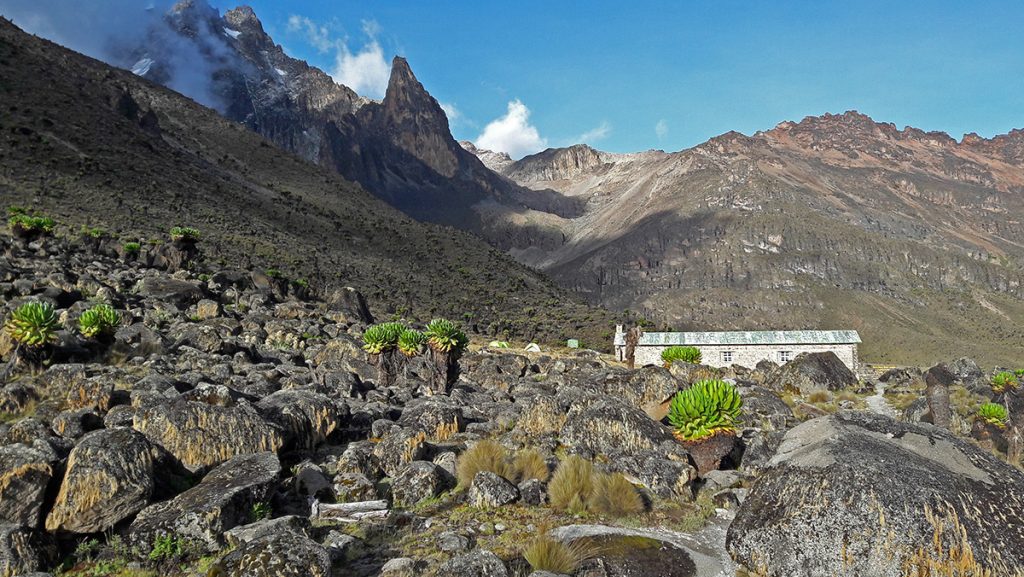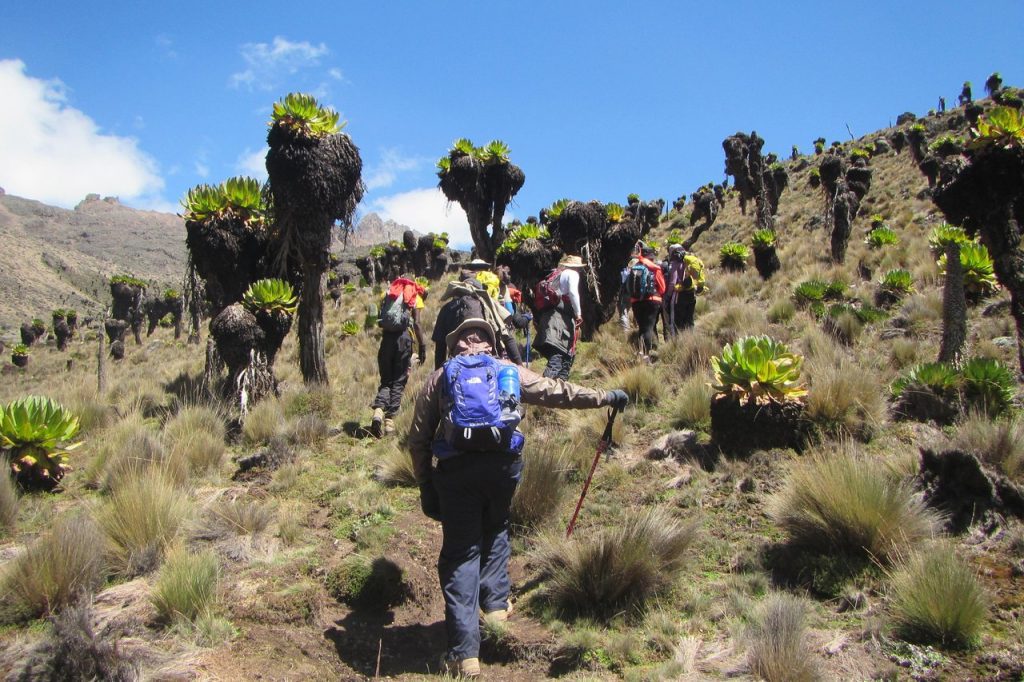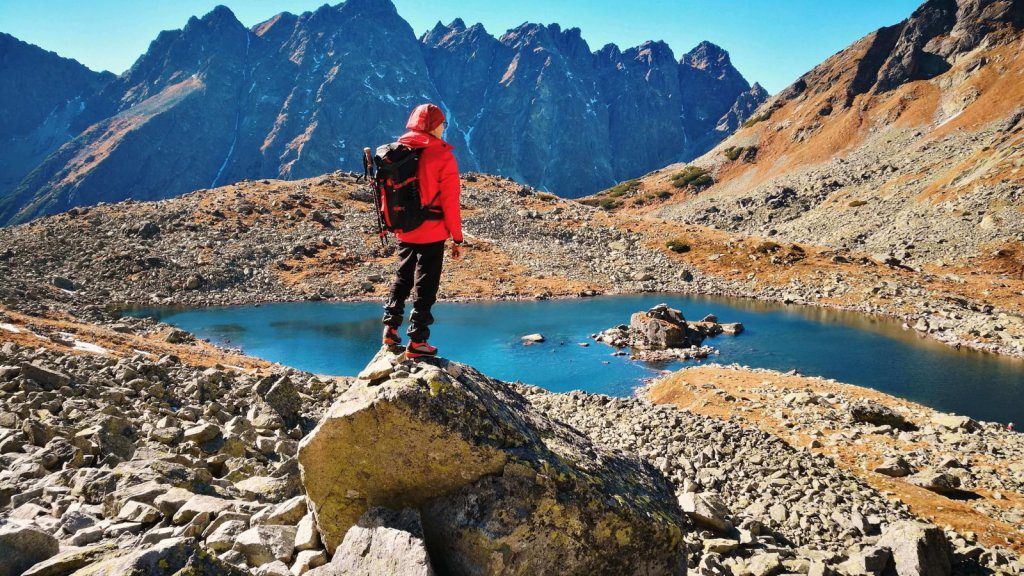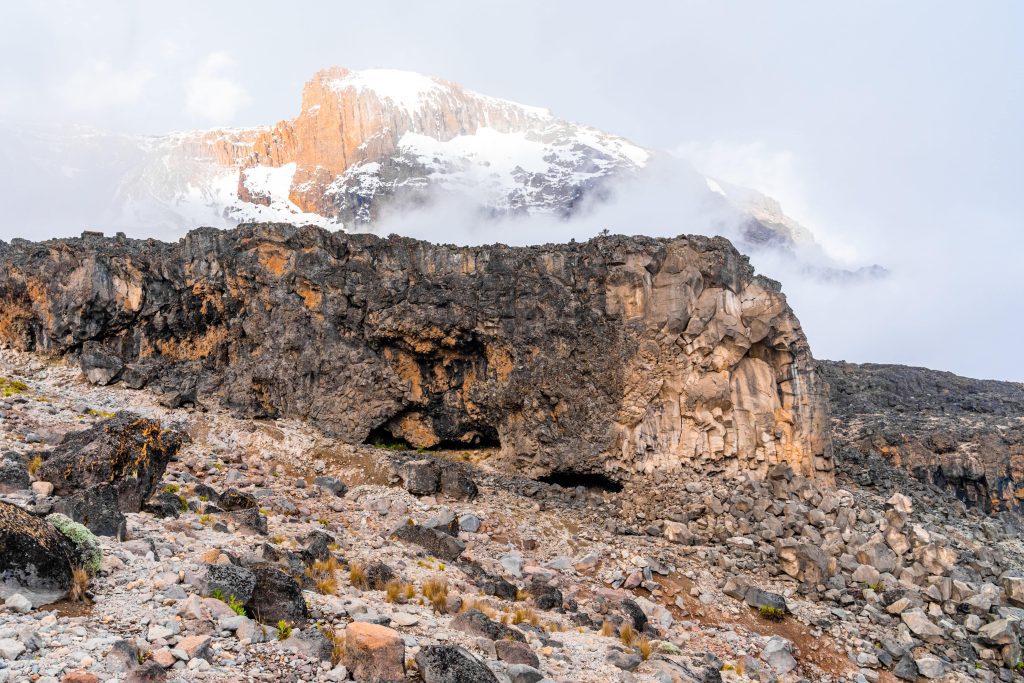These towering Mount Kenya peaks emerge from the lofty 4,500-meter mark, creating an extraordinary spectacle that captivates the hearts of all who behold them. The majestic Mt Kenya stands as evidence to showcase the raw beauty and untamed wilderness of the African continent. As you go deeper into the heart of Mount Kenya, prepare to encounter its snow-capped peaks, verdant slopes, and diverse ecosystems brimming with exotic wildlife.
Biodiversity, Flora and Fauna of Mount Kenya.
Biodiversity on Mount Kenya is predominately influenced by its varying altitude and climate. The mountain has unique vegetation zones, each hosting unique plant and animal communities. The foothills and are covered by fertile soils and tropical forests, while higher elevations are characterized by moorlands and alpine vegetation as of many mountains in East Africa.
Plant species on Mount Kenya are in abundance and include a range of flora adapted to different altitudes. The lower slopes are covered in montane forests consisting of trees like cedar, olive, and bamboo. As the altitude increases, the forest gradually gives way to bamboo thickets and open moorlands dominated by tussock grasses and moss Podocarpus milanjianu, Alpine plants such as lobelias and giant groundsel thrive at higher altitudes.
Mount Kenya is also home to diverse animal species, many of which are adapted to the unique environment. Mammals found on Mount Kenya include giant forest hog, elephants, buffaloes, bushbucks, antelopes, and many primate’s species such as black-and-white colobus monkeys. Several carnivores, like leopards and hyenas, inhabit the Mount Kenya.
Birdwatchers will be astonished by the bird species on Mount Kenya. The mountain is home to different green ibis (local Mount Kenya race); Ayres hawk eagle; Abyssinian long-eared owl; scaly francolin; Rüppell’s robin-chat; numerous sunbirds (Nectariniidae); the locally threatened scarce swift; and near endemic alpine swift, Barbets. Reptiles such as the 3 horned chameleon and the Mount Kenya bush viper can also be found in forested areas of Mount Kenya.
Routes for Climbing Mount Kenya
Mount Kenya offers routes for hikers seeking to conquer its beautiful peaks. Among the popular routes, the Chogoria Route stands out as a scenic and challenging option. Starting from the Chogoria Gate, trekkers will hike through untouched montane forests, pristine bamboo forests, and adore the stunning waterfalls before reaching the mesmerizing Lake Ellis. From there, the trail leads to the breathtaking Mintos Hut and continues upwards through alpine moorlands, with awe-inspiring views of the Gorges Valley.
Another renowned route is the Sirimon Route, which begins from the Sirimon Gate and gradually goes up through enchanting montane forests brimming with diverse flora and fauna. Mount Kenya Hikers are rewarded with breathtaking views of the northern valleys and stunning landscapes as they hike towards the summit. These are just a teaser of the exceptional routes available on Mount Kenya, each offering unique challenges and opportunities, ensuring a truly remarkable Mount Kenya trekking holiday.
Naro Moru Route

Naro Moru Route on Mount Kenya is a popular trekking route that excites trekkers with its stunning scenery and challenging terrain. Naro Maru Route starts in the Naro Moru and offers a diverse range of landscapes, from dense forests to moorlands and rocky terrains, providing Mount Kenya trekkers with a captivating experience at every level of the hike. As climbers go upwards, they will see the Naro Moru River and its beautiful waterfalls, adding a touch of natural beauty to the trek.
One of the highlights of the Naro Moru Route is the vertical bog, known as “The Vertical Bog of Dread.” This challenging section tests climbers’ endurance as they navigate through the boggy terrain, requiring careful footwork and determination to progress. However, the rewards are well worth it, as trekkers emerge from the bog to witness breathtaking views of the surrounding landscape.
As the Naro Maru route continues, trekkers encounter the iconic Teleki Valley, a picturesque expanse showcasing Mount Kenya’s raw beauty. Towering peaks and rugged cliffs surround the valley, creating a dramatic and awe-inspiring backdrop for hikers.
The final push towards the summit involves traversing the mountain’s steep slopes and navigating through rocky sections. Climbers must tackle the challenging “The Tooth” – a steep rocky outcrop that demands careful climbing skills. Upon conquering this section, trekkers are rewarded with an exhilarating sense of accomplishment and are welcomed by the unparalleled panorama from Point Lenana, one of Mount Kenya’s summit points. Check out our Mount Meru guide


Sirimon Route
Starting at Sirimon Gate, operated by the Kenya wildlife service on the northwest Mount Kenya site, trekkers embark on a thrilling journey through diverse terrains and breathtaking scenery. The initial leg takes hikers through dense montane forests, gradually transitioning into bamboo and high-altitude moorland. Along the way, the route reveals awe-inspiring views of valleys, gorges, and the majestic peaks that surround Mount Kenya. With campsites like Old Moses Camp (3400m), Shipton’s Camp (3400m), and Austrian Hut providing much-needed rest and shelter, climbers can recharge before conquering the steep sections that lead to the summit.
The Sirimon Route is renowned for its remarkable biodiversity, boasting an array of unique plant species like lobelia, groundsel and wildlife, including Rock hyrax, monkeys, and diverse avian creatures. Ultimately, the Sirimon Route offers both an unforgettable adventure and an opportunity to witness the raw beauty of Mount Kenya’s enchanting landscapes. From the start of the hike to the summit, the Sirimon route is considered the most off-the-beaten path route and physically easier route that will take you from 3-4 days of hike
Chogoria Route
Starting in Chogoria town, the Chogoria Route is called the most scenic Mount Kenya route. The route takes trekkers through lush and verdant landscapes, showcasing the diverse beauty of the mountain. As climbers go up, they traverse dense bamboo forests, moss-covered valleys, and breathtaking waterfalls, creating a mesmerizing experience. The Chogoria Route is known for its remarkable alpine scenery, with panoramic views of the surrounding peaks and valleys. Campsites such as Meru Mount Kenya Bandas and Lake Ellis Camp (3000m) offer respite and a chance to appreciate the tranquil beauty of the region. The route presents challenges, including steep sections and rugged terrain, requiring climbers to be physically fit and well-prepared. However, the rewarding vistas and the opportunity to witness the striking beauty of Mount Kenya make the Chogoria Route an unforgettable adventure for those seeking an extraordinary mountaineering experience.

Burguret Circuit
The Burguret route on Mount Kenya is the least popular due to its challenging navigation and limited camping amenities. However, for some guests, the lack of development and the opportunity to have the route all to themselves adds to its charm. It is worth noting that in 1943, Felice Benuzzi, Giovanni Balletto, and Vincenzo Barsotti escaped from the British PoW Camp at Nanyuki and successfully climbed the mountain using a route similar to Burguret. Benuzzi vividly recounts this adventure in his book “No Picnic on Mount Kenya.”
Going on a trek along Mount Kenya’s Burguret route evokes a sense of remoteness and an untamed wilderness. The journey starts around Mountain Rock Hotel, leading through the forest beyond Gathiuru Forest Station and concluding at an indistinct roadhead in the plantation, spanning a distance of 2,500 meters. From there, the route continues for 2,600 meters, reaching elephant camp. It weaves through a tropical rainforest until it enters the more open Hagenia-Hypericum Zone at 2,860 meters, followed by the Heath Zone, offering clear views of the summits. A delightful campsite called “kampi ya farasi” awaits, where tents can be set up for the night.
Leaving “kampi ya farasi” behind, the route takes a sharp ascent out of the valley, and the ridge subsequently veers right, allowing for a circumnavigation of the hill on rough terrain. Another left turn follows, leading to a descent through the Hausberg Col and Oblong Tarn (4,200m), ultimately arriving at Shipton’s Camp.
What is the best time to Hike Mount Kenya?
The best time to hike Mount Kenya depends on a few factors, including weather conditions and personal preferences. Mount Kenya, located near the equator in Kenya, experiences a variation in climate due to its high altitude. Generally, the dry seasons tend to be the best time for hiking.
January to February: This period falls within the dry season and is considered one of the best times to hike Mount Kenya. The weather is generally clear, with less rainfall and clearer views. However, early January might still have residual rain from the previous wet season.
July to October: This is another popular time for hiking Mount Kenya. It falls within the dry season, and the weather is generally favorable for hiking. The skies are often clear, providing stunning panoramic views.
Please note that these seasons fall in a busy tourism season in East Africa. You might experience crowds.

How to Hike Mount Kenya Safely
Altitude sickness: Mount Kenya is high. Acclimatise slowly to reduce risk. Gradual ascent, rest, and hydration are crucial during this hike
Fitness: Try to be fit before hiking. Mount Kenya is steep and requires endurance and strength. Hiking and exercising before your trip can prepare your body for this challenge
Choose the best hiking gear. This includes good hiking boots, layered clothing for temperature fluctuations, a waterproof jacket, a hat, gloves, sunglasses, sunscreen, a headlamp, a first aid kit, a map and compass, and enough food and water for the trek.
Food and water: Bring enough water for the walk. Some routes have water sources. However, it would help if you purified them before drinking. Bring energy-rich food for the walk.
Stick to the marked hiking routes. These well-marked routes have campgrounds. Straying off the route can lead to danger and loss.
How to get to Mount Kenya?
Most international travelers arrive at Jomo Kenyatta International Airport (NBO) in Nairobi, the capital city of Kenya. There are direct flights to Nairobi from various major cities around the world.
- By road: You can hire a 4×4 from us or take a public bus or Nairobi to Nanyuki or Chogoria. The journey takes approximately 3-4 hours, depending on road conditions and traffic.
- By air: Another option is to take a 35 minutes domestic flight from Wilson Airpor Nairobi to Nanyuki.
FAQs about Hiking Mount Kenya
Which Mount Kenya route is easiest?
Naro Moru Trail is often considered the easiest and most famous route for hiking Mount Kenya. Thanks to its gradual ascent and numerous accommodation options along the route, Both beginners and experienced hikers fine it the easiest route. What is the closest town to Mount Kenya? Nanyuki town is the closest to Mount Kenya.
Is Mount Kenya worth it?
Definetly, Mount Kenya is worthy it. Mount Kenya is the second-highest mountain in Africa below Mount Kilimanjaro and offers stunning natural beauty, diverse wildlife. Whether you’re an an experienced hiker, nature lover, or looking for an adventure, Mount Kenya is just perfect for you.
Can a beginner climb Mount Kenya?
Yes, beginners can hike Mount Kenya, especially if they choose one of the easier routes let’s say Naro Moru majority of the 15,000 people that climb mount Kenya are actually beginners. Please note that, it’s important to be prepared, physically fit, and take its slow so that you can acclimatize properly. You might be interested in in the Best guide to Rwenzori Mountains National Park






